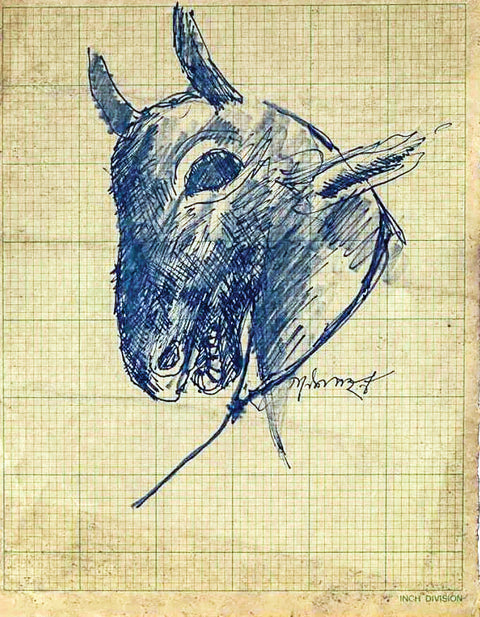Ganesh Pyne
Ganesh Pyne is obsessed with death. He can't forget his first brush with death, in the summer of 1946, when communal riots had rocked Kolkata. His family was forced out of their crumbling mansion. As he roamed around the city, he stumbled upon a pile of dead bodies. On the top was the body of a stark naked old woman, with wounds on her breast. No wonder then his paintings rarely has light backgrounds, and blue and black happen to be his favorite colors. Death also finds its way back into his canvas through different motifs. Working mostly in tempera, his paintings are rich in imagery and symbolism.He doesn't remember the first time he started to paint, but does remember the anger that he drew from his family over his decision to become an artist. Pyne, nevertheless, took admission in the Government College of Arts and Crafts, Kolkata. In 1963, he joined the Society for Contemporary Artists. During that period he made small drawings in pen and ink owing to lack of money to buy color. The anger and despair of the 70s fuelled one of the most fruitful periods in his life as an artist that culminated in works like 'Before the Chariot' and 'The Assassin'.However, sometime in the 80s, he shut himself from the world, driven away by the jealousy and pettiness that the art bazaar arose among his friends.Initially, Pyne painted watercolors and sketches of misty mornings and wayside temples, variously influenced as he was by Walt Disney and the art of Abanindranath Tagore. He counts Hals Rembrandt and Paul Klee as the other influences.Equally devoted to cinema as he is to painting, Pyne has also drawn inspirations from movies made by Fellini and Ingmar Bergman. Today, he is known as the foremost exponents of the Bengal School of art.Pyne passed away in 2013.
His exhibit with us is a graphite, ink and pen on graph paper.





